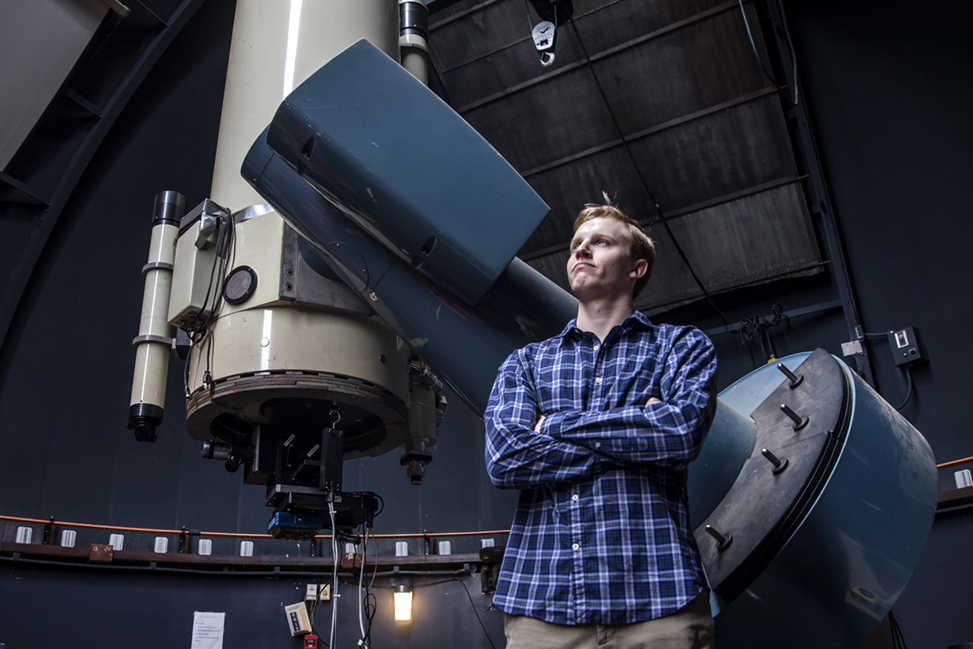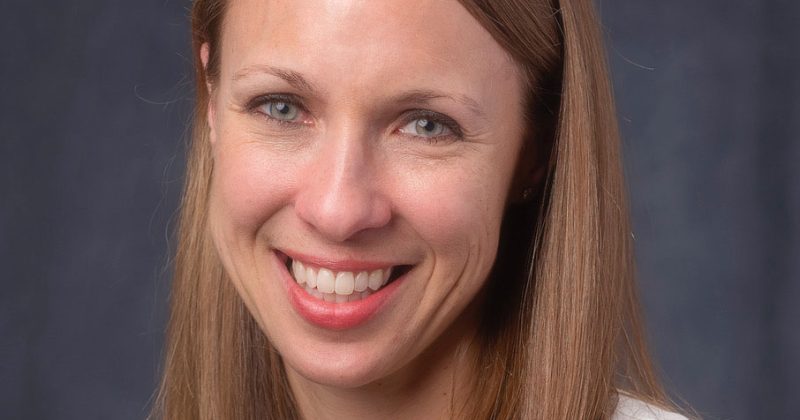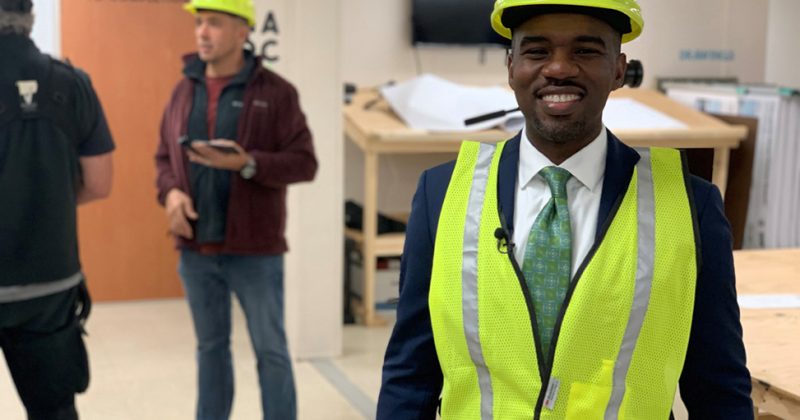
Ben Kaiser (pictured in the Morehead Observatory) studies the dim light emitted by the remnants of very old stars, known as white dwarfs. He tells students that math plays a big role in his work. (photo by Johnny Andrews)
For up-and-coming astrophysicist Ben Kaiser, a desire to figure things out for himself has led to a career investigating the far reaches of our universe.
As a kid, Ben Kaiser never owned a telescope, but that didn’t stop him from developing an intense fascination with outer space.
“It was actually TV,” he said with a chuckle. Kaiser spent much of his adolescence watching the History Channel, the Discovery Channel and National Geographic documentaries. But his all-time favorite was MythBusters.
“As a kid you hear people say all this stuff, but no one checks to see what is true. MythBusters was like a way of checking,” Kaiser said of the Australian-American science show. “And I realized you can do that in everyday life — that’s what led me to science.”
That innate curiosity eventually led him to the department of physics and astronomy at Carolina, where he is currently pursuing a Ph.D. in astrophysics. Using imagery collected by the SOAR telescope in Chile, Kaiser examines dim light emitted by the remnants of very old stars, known as white dwarfs.
Every star will eventually exhaust its fuel, including our sun (in roughly 5 billion years). When a star burns out, it loses mass and sheds its outer layers, which can knock nearby planets out of orbit. “White dwarf” is the name given to the hot core that remains once a star finishes expelling its outer material.
Kaiser and his colleagues use spectroscopy to measure elements in the atmosphere of a white dwarf. A unique spectrograph designed by Chris Clemens, astrophysicist and senior associate dean for research and innovation in the College of Arts & Sciences, measures how much light is emitted by a white dwarf at different wavelengths.
The universe did not always contain all the elements it has today. When it formed 13.8 billion years ago, only hydrogen, helium and lithium were present. When light is missing from certain wavelengths of the spectrograph, Kaiser can discern the composition of exoplanets, or planets outside of our solar system.
“By 9 billion years ago there were many different elements, but in different relative amounts compared to those in our solar system,” Kaiser said. “The amounts of stuff in rocks and other things in the solar system should be dependent on how much of each element is around to make those rocks. It is possible there are very different worlds around older things, and it’s largely unexplored what those are made of.”
To figure out the composition of nearby planetary bodies, like Mars or the moon, NASA sends astronauts or rovers.
“They can go there and scoop up material from the surface, but that’s not really an option for exoplanets, given that the nearest one is several light years away,” Kaiser explained. “Looking at white dwarfs is our best bet to figure out what the exoplanets are made of. It’s also a lot cheaper.”
Kaiser says the joint nature of the physics and astronomy department is what drew him to UNC. “Most of the powerhouse astronomy programs in the U.S. are just astronomy, but you need physics,” he said.
Math also plays a critical role in astrophysics — a reality that Kaiser often tries to impress upon the undergraduate students he teaches.
“We need to convince them that paying attention to math is a long-term investment in understanding,” he said. “Having telescopes is cool but seeing a star in a telescope doesn’t tell you anything. Math tells you something about it.”
But perhaps the most important attribute, at least for Kaiser, is the confidence to question assumptions and engage in critical thinking.
“There are complex things around you that you can figure out. You don’t have to be intimidated by them, and you don’t have to just take someone else’s word for it,” he said. “You can apply analytical reasoning to them — it’s like a MythBusters approach to life.”
By Mary Lide Parker ’10
Published in the Fall 2020 issue | Tar Heels Up Close
Read More

Treul, Marinelli to lead Program for Public Discourse
Sarah Treul and Kevin Marinelli have been tapped to lead…

Southern Futures: Exploring intersections of class and race in Green Valley
Moriah James in Washington, DC. Graduate student Moriah James was…


